Leon Varga is a multi-disciplinary artist from Hungary who works across painting, sculpture, installation and printmaking. He graduated from the Academy of Fine Arts in Budapest and spent time in Rome before moving to Leeds in 2005 where he did an MA. Court Spencer caught up with him in his studio in Armley to find out more about practice and current projects.
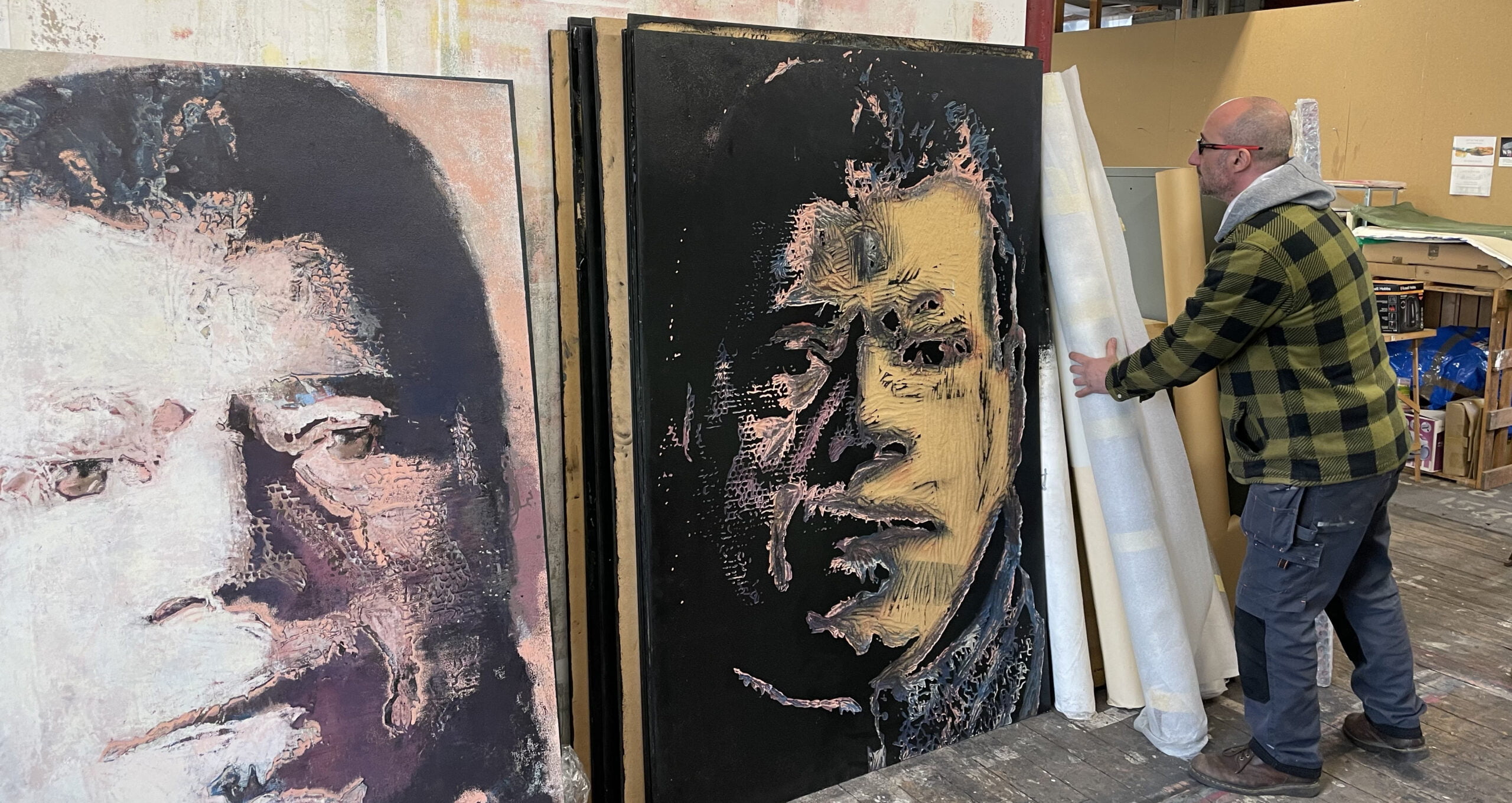
Leon in his studio with blocks from his Cuts and Blocks series.
Court: Hey it’s great to see you! I must have been about three years since I saw you last! Thanks for inviting me up to your studio, this place is great. How long have you been here, and do you also have another studio over at Seagulls?
Leon: Aye, good to see you too. I have been here in Smart Studios for 15 years. It’s a great space and works really well for painting and carving but it lacks the space and easy access for larger sculptures and installations. I use the Seagulls workshops to create my larger pieces and it works well because it’s on the ground floor and I have a lot of heavy duty machinery at my disposal.
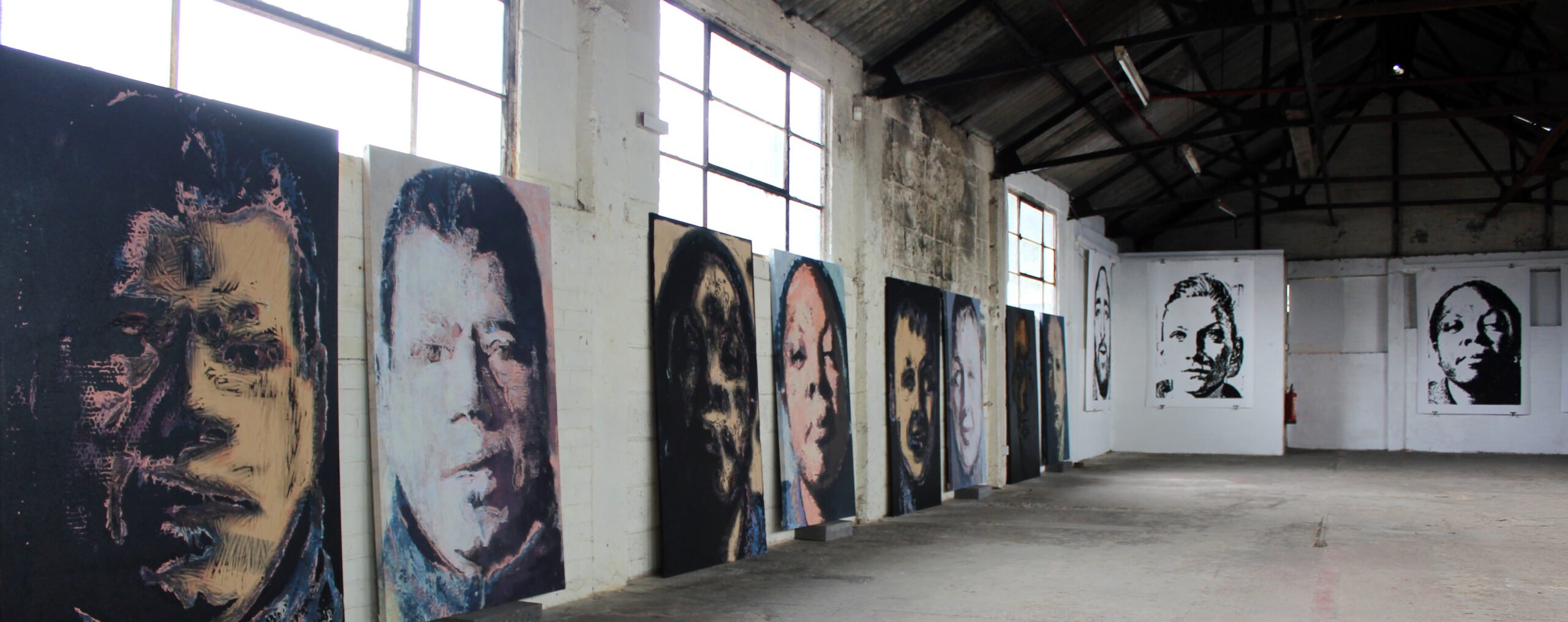
Cuts and Blocks exhibited in a temporary exhibition space on Kirkstall Rd, Leeds in 2017.
Court: It’s so nice to see your Cuts & Blocks series again. I know you’ve said in the past that you really liked the tactile nature of carving the wooden blocks and that was quite important as you have impaired vision in one eye. How has that impacted your practice?
Leon: The visual impairment in my left eye fundamentally affects the way I perceive images. It impacts how I create visual images as I see things differently to those with full sight. My visual impairment has always forced me to find a very different strategy to approach and understand techniques in fine art. I rely more heavily on touch, limited tonality, and surface texture. My technical approach generates a play between what is visible and what cannot be shown but only known through felt sensation.
The series Love Supreme is meant to be viewed from a double perspective, one from a clear viewpoint (using my right eye) and the other from a partially sighted viewpoint (using my left eye). I hope they will enable the viewer to appreciate portraiture from a more intimate perspective because of the scale and the mixture of techniques.

A selection of the Love Supreme series.
Court: The ink sits beautifully on the marble dust and it feels amazing! Do you always work on this sort of scale?
Leon: Yes I prefer to work on this scale although I do have some smaller more delicate pieces. I find working at this scale preferable because it allows me to enter into the piece in physical sense. The Lenin portrait was one of my first carvings when I arrived in the UK in 2005; it was fundamentally a memory recall of my childhood under Goulash Communism and the era of iconoclasm after 1989.
The fall of the Soviet Union brought about immense changes to Hungary and thus my individual personal experience. I was mesmerised by the immediacy of the changes of perceived ‘heroes’ which my whole country was driven by. How could a hero fall so quickly? The resulting tryptic ‘Lenin and Me’ was a recognition of the indoctrinated mind of the child that I thought I was meant to be.
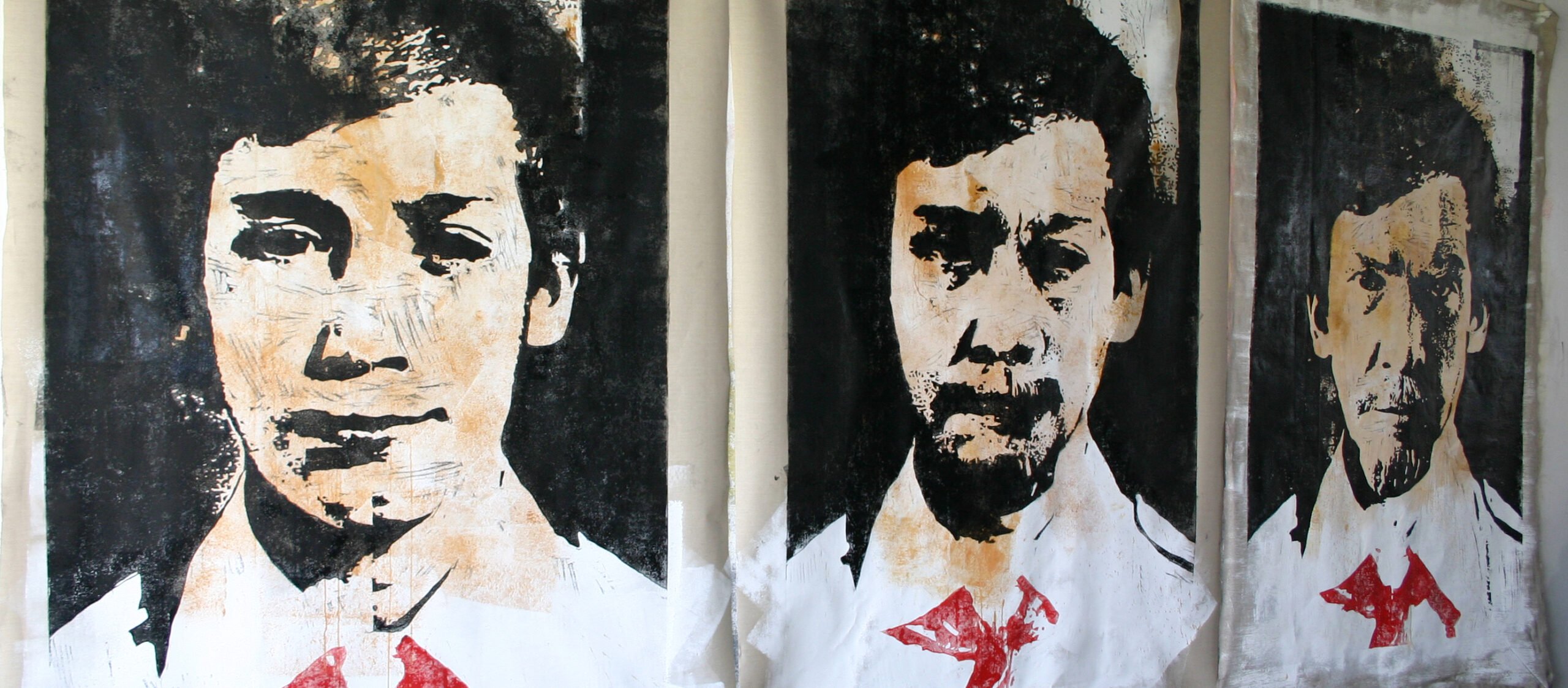
Lenin and Me.
Court: What was your childhood like growing up in Hungary? And how does that play out in the work you make?
Leon: I was a happy child; the socialist way of life was all I knew. I could see that my parents lived with an element of fear and always felt they had to be one step ahead of what was allowed and what was forbidden. To me it seemed normal because it was all I knew.
Socialism and my eye injury play a major part in my art. I feel like they are both an enormous part of who I am and how I think. I hold no illusions of the ‘mirage’ of my childhood. It is just how it was.
Court: And what prompted the move to Leeds?
Leon: I moved to Leeds in 2005 with the hope of further building my art career. I was accepted for an MA in Contemporary Art Practice at Leeds Met University.
Court: Can you tell us a bit about your role in Seagulls and the workshops you’re setting up there?
Leon: I joined Seagulls in 2019. They had a long-term aim to develop an arts centre teaching craft and arts based skills. I teach print, woodwork, and copper and silver smithing. We also work with another social enterprise, We Belong Here, to mentor art students in their personal practice. There is much to do but I believe we can support the growth of the art community and provide a space for up-and-coming artists to reach their full potential.
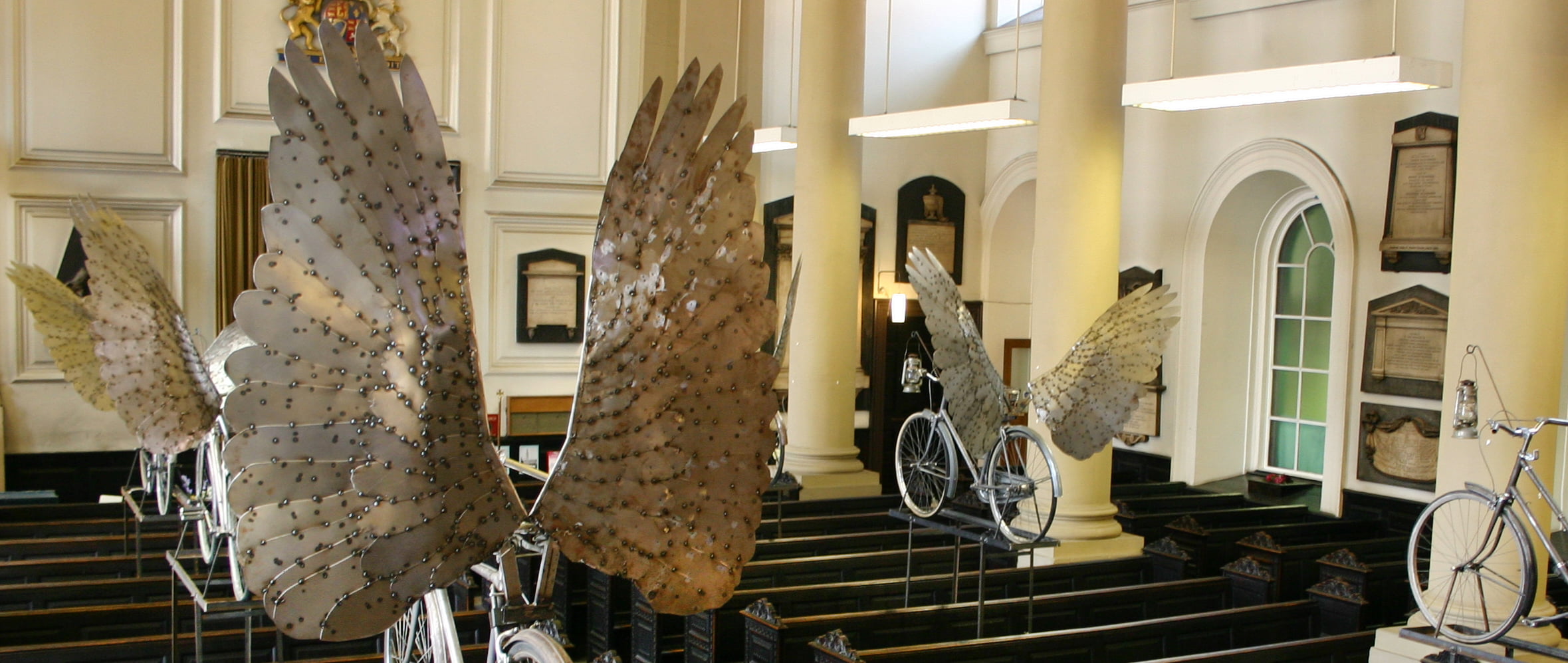
Kiss the Sun Icarus exhibited in 2007 at the Holy Trinity, Boar Lane, Leeds.
Court: That sounds brilliant, and that sort of support is really needed. Speaking of support, during lockdown you were awarded a bursary from Leeds Christian Institute to work with a theologian. Can you tell us a bit about how that came about and the work you made?
Leon: While not religious personally I hold a long-term interest in sacred places. In 2007 I exhibited my installation ‘Kiss the Sun Icarus’ in Boar Lane church where I met Si Smith and we’ve kept in touch since. He then told me about the LCI bursary and I applied. ‘The Way Up is Down’ is an exploration of the shifts that the pandemic and life in lockdown have brought upon us.
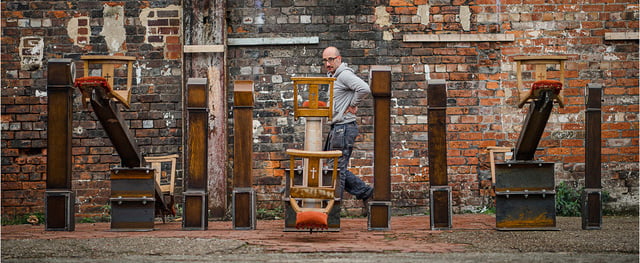
Leon with The Way Up Is Down (2022)
Court: The Way Up Is Down has just began touring so it may be unfair to ask but are you working on anything else at the moment or do you have any upcoming projects? And where can people find out more about your work and where to see it?
Leon: I am currently working on an untitled piece which is a sculptural installation fundamentally based on space and language. It’s a very large piece so I am looking for adequate space and surroundings to accommodate it.
I’m not the best on social media but am trying to improve! I have an Instagram page @varga_leon.
Court: Brill! Well I’m sure people would love to see more about your work on Insta. Do you have a career highlight thus far?
Leon: In 2004 I won a government scholarship to the Hungarian Academy of Rome, I got to spend four months in one of the most fascinating cultural cities in Europe. I gained so much from the experience and it definitely improved my practise.
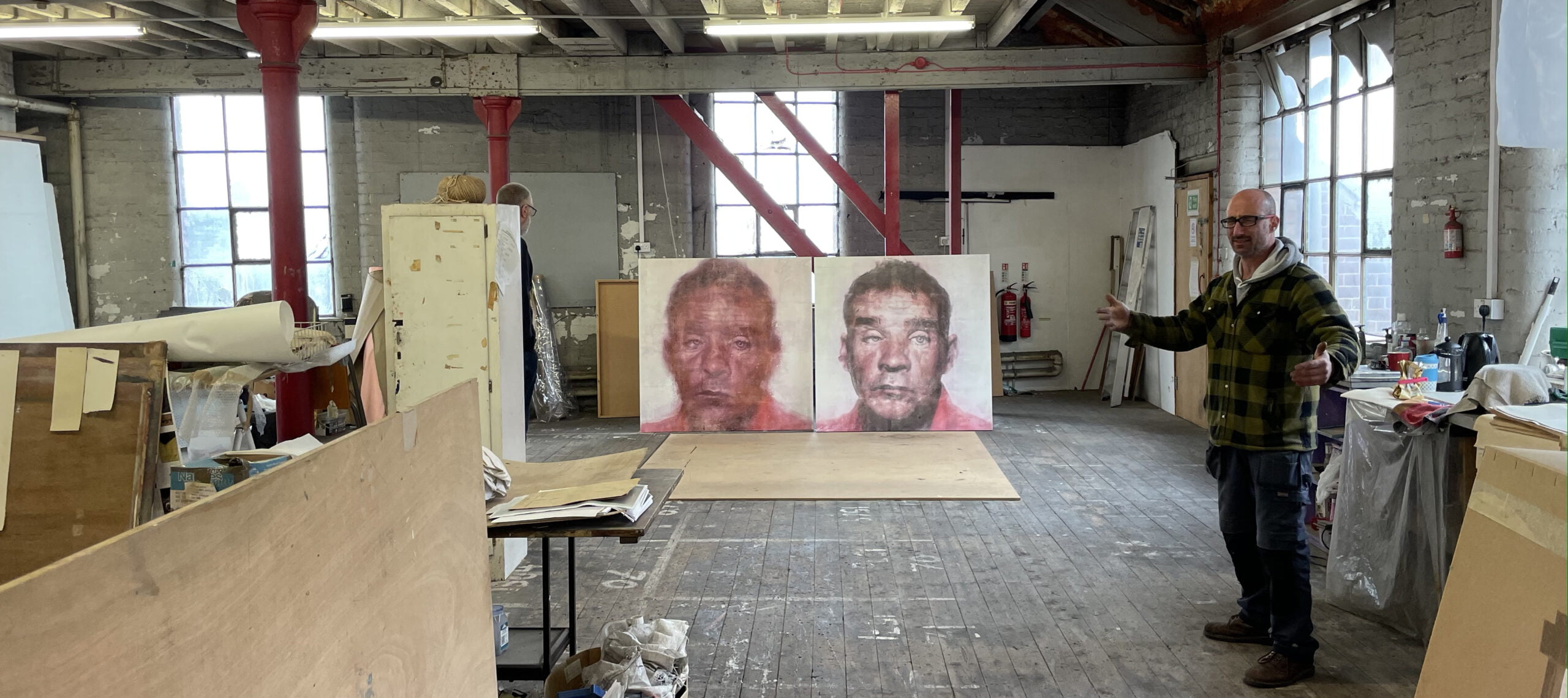
Leon in his studio space in Smart Studios.
Court: Do you have a dream project you would love to make happen?
Leon: My current untitled project I mentioned is a huge dream of mine and I also have an idea for a Euro city wide walk with my winged rucksacks.
Court: And just a small question to finish on: why do you make art?
Leon: Because I can’t not!
Court: Very good answer! Well Leon, it’s been so nice to see you. Thank you for pulling out so much of your work and letting me snoop through your studio.
Leon: Thank you for taking the time to visit and to view my work.
Filed under: Art & Photography
Tagged with: art, artist, fine arts, Hungary, leeds, multidisciplinary, painter, painting, portrait, portraiture, printmaking, sculpture, Socialism, Soviet Union, texture
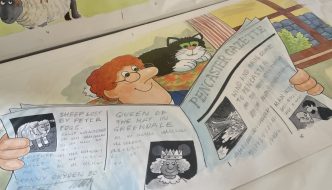
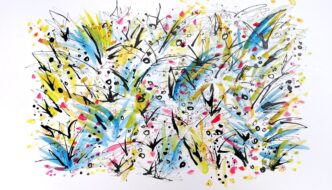
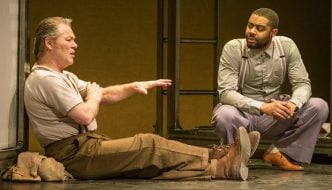
Comments